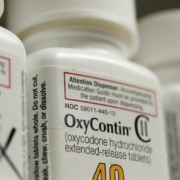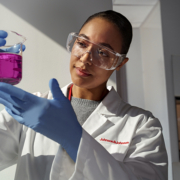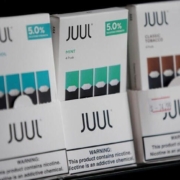J&J unit files for second bankruptcy to pursue $8.9 billion talc settlement
J&J unit files for second bankruptcy to pursue $8.9 billion talc settlement
By Dietrich Knauth and Mike Spector
April 4 (Reuters) – Johnson & Johnson (JNJ.N) has agreed to pay $8.9 billion to settle tens of thousands of lawsuits alleging that talc in its iconic Baby Powder and other products caused cancer, the company said. The amount dwarfs J&J’s original offer of $2 billion.
The agreement follows a January appeals court ruling invalidating J&J’s controversial “Texas two-step” bankruptcy maneuver, in which it sought to offload the talc liability onto a subsidiary that immediately filed for Chapter 11.
The J&J subsidiary, LTL Management, filed for bankruptcy protection late Tuesday for a second time with the intent to present a reorganization plan containing the proposed settlement to a judge as soon as May 14, the subsidiary said in a court filing. J&J said in a statement that about 60,000 talc claimants had agreed to the proposal.
The J&J subsidiary filed for bankruptcy in New Jersey, the same jurisdiction where it faced the appeals court defeat. J&J crafted new financing arrangements with its subsidiary to avoid running afoul of the appeals ruling, the subsidiary said in a court filing. The ruling determined LTL Management had no legitimate claim to bankruptcy because it was not in financial distress.
The appeals court rejection effectively raised the price tag for J&J to rid itself of the sprawling talc litigation, after plaintiffs’ lawyers had resisted the company’s tactics and prevailed. J&J’s board met over the weekend and approved paying the vastly larger settlement to current and future plaintiffs with various gynecological cancers and mesothelioma, according to Mikal Watts, one of the plaintiffs’ lawyers who negotiated the agreement.
J&J reiterated on Tuesday that its talc products are safe and do not cause cancer. Company lawyers said talc claims lacked scientific merit and accused plaintiffs’ lawyers of continuing to advertise for clients in the hopes of extracting large financial sums.
The company still faces significant risk that other plaintiffs could continue to oppose the settlement and appeal the case again to the same court that has already rejected the subsidiary bankruptcy — the 3rd U.S. Circuit Court of Appeals in Philadelphia.
Attorneys representing thousands of plaintiffs issued a release late Tuesday opposing the settlement. “This sham deal does not even pay for most victims’ medical bills,” said Jason Itkin, founding partner of the Houston-based personal injury law firm Arnold & Itkin LLP.
Reuters reported earlier on Tuesday that J&J was exploring placing its talc subsidiary into bankruptcy proceedings a second time and that a lawyer for the company had approached plaintiffs’ attorneys in recent weeks proposing the two sides craft a new settlement agreement that could be consummated in a second J&J subsidiary bankruptcy. Reuters last year detailed the secretive planning of Texas two-steps by J&J and three other major companies in a series of reports exploring corporate attempts to evade lawsuits through bankruptcies.
Under terms of the newly proposed settlement, plaintiffs diagnosed with cancer before April 1 would be paid from a bankruptcy trust within one year of a judge approving the Chapter 11 plan creating it, according to Watts, the plaintiffs’ lawyer who helped negotiate the deal. Plaintiffs diagnosed later will have access to money set aside in the trust for the next 25 years.
The massive settlement emerged after the legal failure of J&J’s original Texas two-step bankruptcy, filed in October 2021. The novel tactic involved using a Texas state law to divide a company being sued into two, then shifting liability to one of the newly created entities. LTL Management, the new subsidiary that absorbed the liability, declared bankruptcy almost immediately after it was created.
Plaintiffs lawyers portrayed J&J’s two-step as an abuse of the bankruptcy system by a multinational conglomerate with a market capitalization exceeding $400 billion and in little danger of running out of money to pay cancer victims.
J&J and its subsidiary have argued the bankruptcy served a greater good for all parties, including plaintiffs: The restructuring could deliver settlement payouts more fairly, efficiently and equitably than a “lottery” offered by trial courts, where some litigants get large awards and others get nothing.
The appeals court at the end of March denied the J&J subsidiary’s bid to delay the ruling from taking effect while it seeks a review from the U.S. Supreme Court. On Tuesday, U.S. Bankruptcy Judge Michael Kaplan in New Jersey dismissed the previous LTL bankruptcy, complying with the appeals court ruling that reversed his earlier decision endorsing the maneuver.
Watts, the plaintiffs’ attorney, told Reuters he believes enough plaintiffs have agreed to the settlement to convince a bankruptcy judge to approve it. The number agreeing is crucial. In asbestos-related bankruptcies, a company needs 75% of plaintiff-creditors to approve a restructuring plan for a judge to approve it. That is a higher bar than in other kinds of bankruptcies.
A December 2018 Reuters investigation revealed that J&J knew for decades about tests showing its talc sometimes contained carcinogenic asbestos but kept that information from regulators and the public. J&J has said its Baby Powder and other talc products are safe, do not cause cancer and do not contain asbestos.
The company announced in 2020 that it would stop selling its talc Baby Powder in the U.S. and Canada due to what it called “misinformation” about the product and later announced its intent to discontinue it worldwide in 2023.
Our Standards: The Thomson Reuters Trust Principles.
Source: Reuters







 Reuters
Reuters

